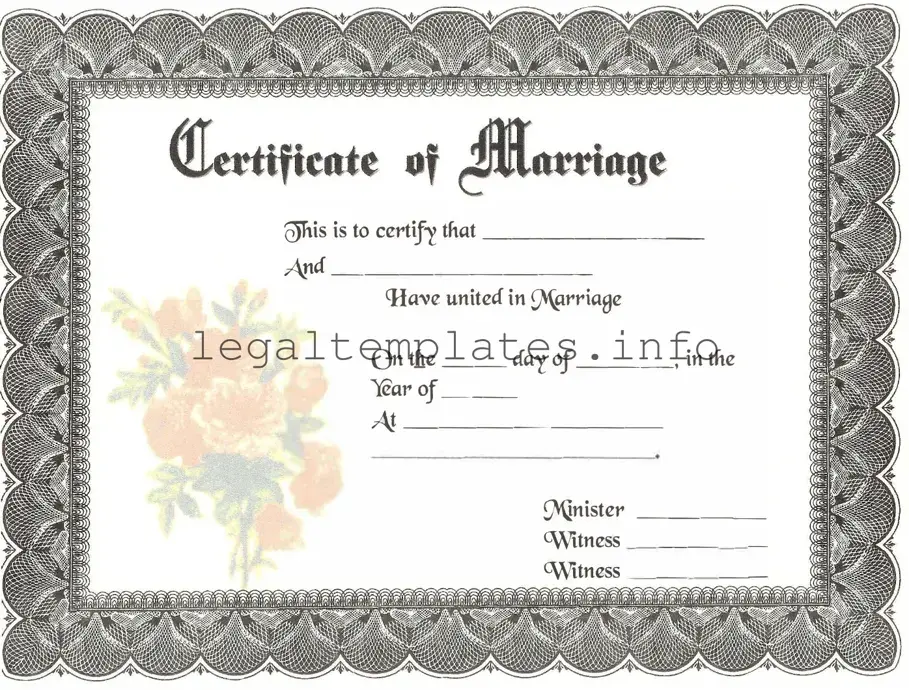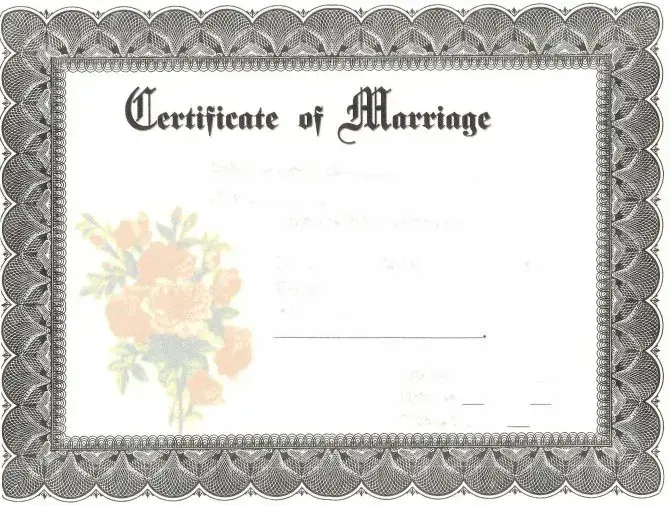What is a Marriage Certificate?
A Marriage Certificate is an official document that proves the legal union between two people. It is issued by a governmental authority or public record keeping agency. It typically includes details such as the names of the couple, the date of the marriage, and the place where the marriage occurred.
How can I obtain a Marriage Certificate?
To obtain a Marriage Certificate, you typically need to submit a request to the vital records office of the state or jurisdiction where the marriage occurred. This usually involves completing an application, providing valid identification, and paying a fee. Some jurisdictions also offer online ordering options.
Is there a fee to get a Marriage Certificate?
Yes, most jurisdictions charge a fee for issuing a Marriage Certificate. The fee varies by location and sometimes depends on the number of copies requested. It is advisable to check with the specific office where you are applying for the current fees.
How long does it take to receive a Marriage Certificate?
The time it takes to receive a Marriage Certificate can vary widely depending on the jurisdiction and the method of request. Standard requests can take from a few days to several weeks, while expedited services, when available, can significantly reduce this time. It’s best to inquire directly with the issuing authority for the most accurate timeframe.
What information do I need to provide to request a Marriage Certificate?
When requesting a Marriage Certificate, you typically need to provide the full names of both individuals as they appear on the marriage license, the date of the marriage, and the city or county where the marriage license was issued. Some requests might also require additional identification or proof of eligibility to obtain the record.
Who can request a copy of a Marriage Certificate?
Generally, marriage certificates are public records; however, some jurisdictions may restrict who can obtain an official copy. Usually, the married individuals, legal representatives, and specific family members are allowed to request a copy. It's important to check with the issuing authority about their specific requirements.
Can I make changes to a Marriage Certificate after it has been issued?
If errors are found on a Marriage Certificate, corrections can usually be made by contacting the issuing authority. The process and documentation required for amendments vary by jurisdiction. It might require legal documentation or affidavits to support the requested change.
What is the difference between a Marriage Certificate and a Marriage License?
A Marriage License is a document that allows a couple to get married, issued before the marriage occurs. A Marriage Certificate, on the other hand, is an official record proving a marriage has taken place, issued after the marriage ceremony.
Is a Marriage Certificate valid in other countries?
A Marriage Certificate is generally recognized worldwide, but some countries may require a certification procedure known as an apostille to authenticate the document for international use. It is advisable to check the requirements of the specific country where you intend to use the document.
How do I replace a lost or damaged Marriage Certificate?
If your Marriage Certificate is lost or damaged, you can request a replacement from the vital records office of the state or jurisdiction where the marriage was conducted. The process is similar to the initial request, requiring completion of an application, identification, and payment of a fee.

